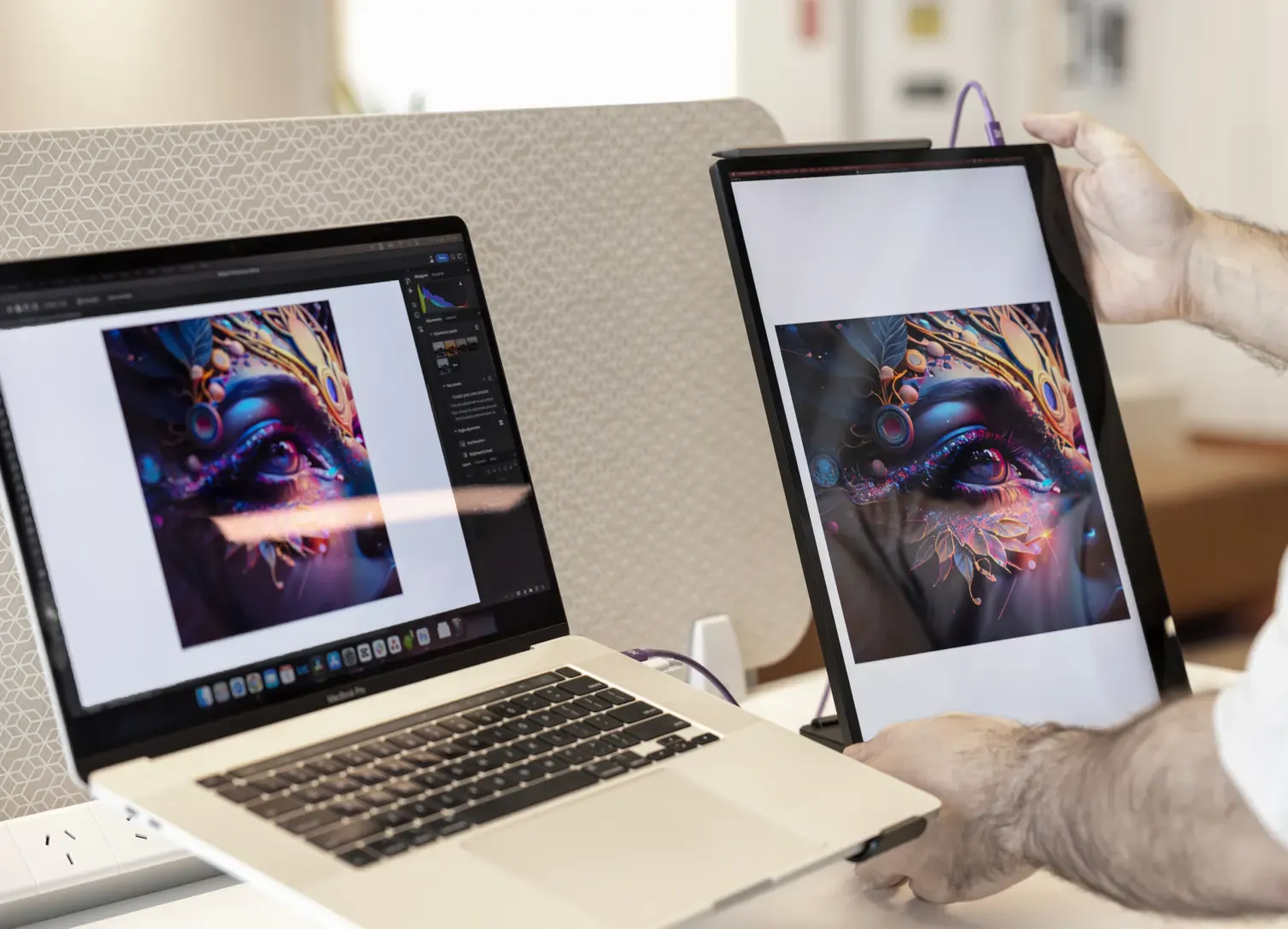espressoFlow - A Cross-Platform Hardware Integration App
By
John Phung

espressoFlow is a cross-platform desktop application crafted to integrate seamlessly with Espresso's hardware, enabling users to leverage advanced screen arrangement capabilities and efficient workflows for launching desktop applications. Developed using Electron, React, and TypeScript, this app acts as a vital link between Espresso's portable touchscreens and the user's desktop environment, enhancing productivity and delivering an intuitive user experience. As a key contributor to this project, I utilized my skills in cross-platform development, hardware integration, and modern web technologies to build a robust and user-friendly solution.
Tech Stack
The development of espressoFlow relied on a modern and adaptable tech stack, chosen for its cross-platform capabilities and performance:
- Electron: Enabled the creation of a desktop app using web technologies, ensuring compatibility across macOS and Windows with a unified codebase.
- React: Powered the dynamic and responsive user interface, facilitating an interactive experience for screen management and app workflows.
- TypeScript: Enhanced code reliability and scalability with strong typing, reducing errors and improving maintainability.
- Node.js APIs: Provided low-level system access for launching desktop apps and interfacing with Espresso's hardware.
- Custom Hardware Integration Modules: Built to enable real-time communication and control between the app and Espresso's touchscreens.
This combination of tools highlights my expertise in full-stack development and hardware-software integration.
Challenges
Building espressoFlow involved overcoming several technical hurdles, each requiring creative problem-solving and technical proficiency:
Cross-Platform Compatibility:
Achieving consistent functionality across macOS and Windows demanded platform-agnostic code. I tackled this by using Electron’s capabilities and implementing conditional logic to handle OS-specific nuances like file paths and system commands.
Hardware-Software Synchronization:
Real-time interaction with Espresso's touchscreens was essential. I created custom Node.js modules to manage hardware communication, ensuring the app could detect and configure the devices accurately.
Performance Optimisation:
Electron apps can strain system resources, so I optimised performance using techniques like lazy loading, code splitting, and minimising Inter-Process Communication (IPC) calls to maintain smooth operation.
Complex UI for Screen Arrangement:
Crafting an intuitive interface for managing multiple screens was challenging. I leveraged React’s modular design to build a drag-and-drop system, simplifying screen organisation and app workflow setup.
Security and Permissions:
Safely handling system-level actions, such as app launches and hardware access, required secure design. I implemented protected IPC channels and minimal permission requests to ensure safety and user trust.
These challenges demonstrate my ability to navigate complex requirements and deliver a high-quality product.
Contributions
My work on espressoFlow reflects my technical skills and direct impact on its success:
Cross-Platform Architecture:
I designed the app’s foundation with Electron and React, ensuring a consistent experience across platforms while using TypeScript for maintainable, reusable code.
Hardware Integration:
I developed Node.js / C++ wrapper modules to facilitate real-time communication with Espresso's hardware, enabling seamless detection and control of the touchscreens.
Screen Arrangement and Workflow Features:
Using React, I built an interactive interface for arranging screens and defining app workflows, significantly enhancing the app’s usability and appeal.
Performance Enhancements:
I reduced load times and resource usage through optimisations like lazy loading and efficient state management, ensuring a fluid experience even on modest hardware.
Security and Permissions Management:
I secured system interactions with robust IPC channels and careful permission handling, balancing functionality with user safety.
espressoFlow exemplifies my ability to create impactful software that bridges hardware and user needs. By blending technical expertise with a user-focused approach, I contributed to a tool that elevates Espresso's hardware functionality, making it a standout project in my portfolio.